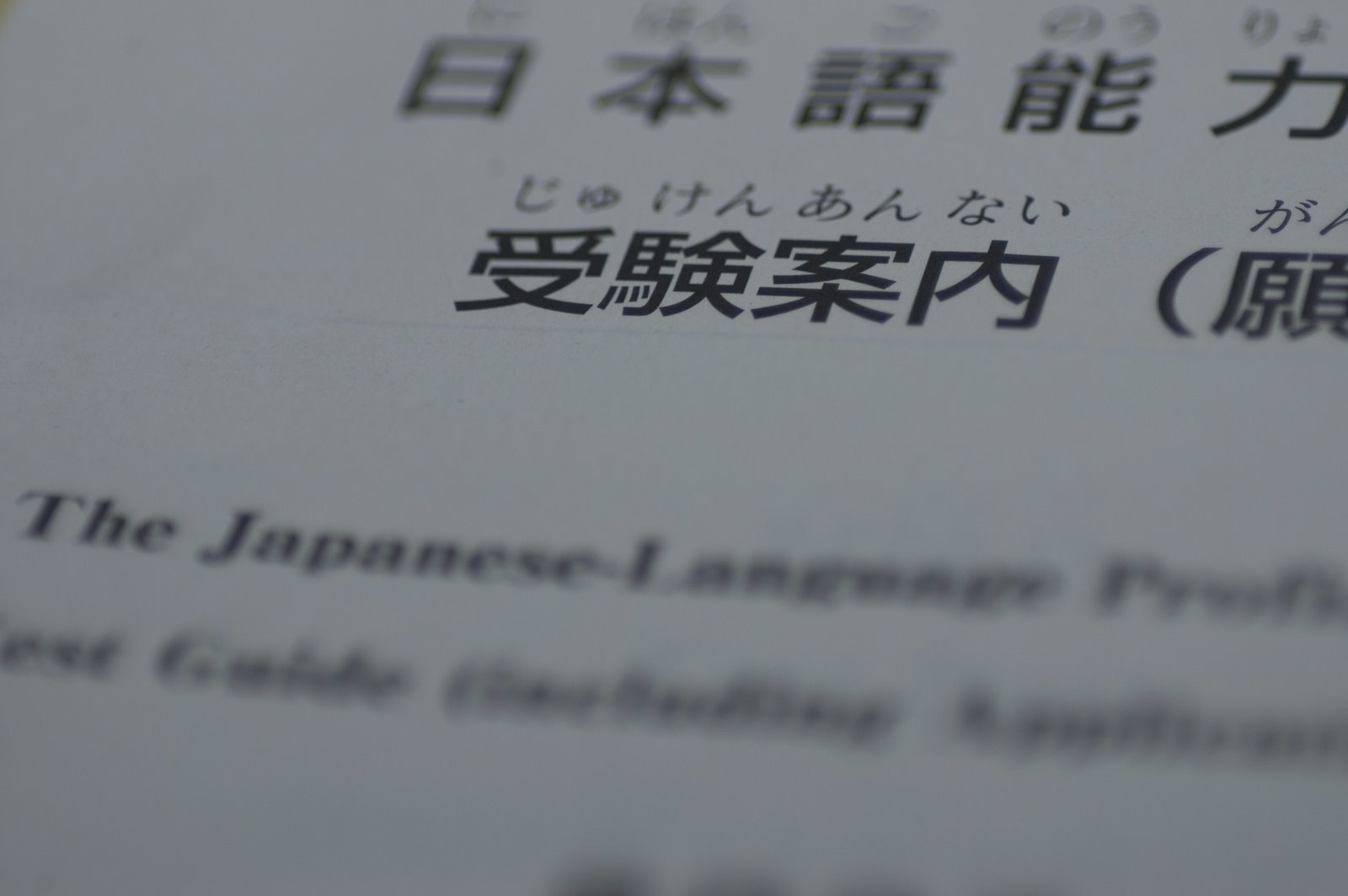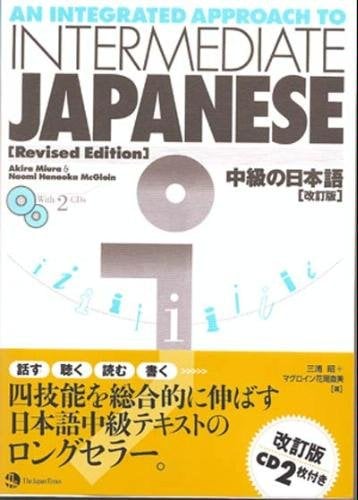I had studied Japanese for three years part-time before taking on this book. Please note that although the title of the book states ‘intermediate’ in reality this book is more for upper beginners to around lower intermediate level. In terms of JLPT (Japanese Level Proficiency Test) this is around N3 (lower intermediate to Intermediate) and falls far short of N2 (Upper Intermediate) if you are looking for N2 preparation. It provides a good foundation in kanji and vocabulary, however again this is at most around lower intermediate level/N3 level, while some of the grammar does touch upon N2 level.
This course book is primarily aimed at university students and a number of universities use this one after completion of Minna no Nihongo II or Genki II. The fifteen chapters each incorporate a conversation text, a written text, a list of vocabulary and kanji, and a number of key grammar points. English translations are provided throughout the book for ease of comprehension. For a beginner it is a fairly big step up as there is a lot of both kanji and grammar to learn, however each chapter flows to the next one quite well and as the structure of each chapter is the same it facilitates language learning. In addition there is a workbook with both a lesson-by-lesson kanji practice session and many written grammar exercises for each lesson.

Unfortunately, Japanese is a language that requires a lot of effort to make just a little bit of progress, and this book covers an important milestone between moving from beginner to a higher level of study. As such after completing the Genki or Minna no Nihongo books it can be quite discouraging to take on this book and discover there is still so much more to learn, however if a student completes this book they will have a good foundation for future higher level study.
Still, there are several negative aspects to this book, for example the grammar points only describe the meaning of the grammar and not the register for it. This can be confusing as several grammar points are presented as having the same meaning, but in fact there is grammar which is only used in writing, only used in casual speaking or only used in formal speaking. Another negative aspect is that as the book is designed for young learners at university, i.e. 18-21, all of the scenarios, conversations and a lot of the vocabulary is focused on situations that these students might encounter, for example, dealing with host family problems, asking teachers for a reference, living as an exchange student in Japan, etc, none of which would be particularly relevant or useful for an adult learner.
"This course book is primarily aimed at university students and a number of universities use this one after completion of Minna no Nihongo II or Genki II."
There is still a lot of useful grammar and kanji that can be learnt in this book and although some of the conversations and written texts can be irrelevant for adult learners they are still good models for how to speak with peers, teachers or senior people. The CDs provide a very good resource for listening to how people speak, although at a slower pace compared to natives, as well as practice in speaking along with the speakers.
One of the biggest obstacles for Japanese learners is to not avoid reading long texts; this book introduces some longer texts which many students try to skip as the amount of kanji and grammar can be intimidating. However, in order to access more advanced Japanese it is absolutely essential to start getting used to reading proper texts and to overcome a fear of them. In each chapter there is a text which is really great for accustoming oneself to reading a block of Japanese rather than isolated sentences.
This book tends to bring out rather varied reactions from different learners. Students approaching this book after completion of Genki II or Minna no Nihongo II inevitably cover quite a range of preferences and abilities. Some students are more comfortable with kanji, others with grammar and some with just speaking. As such although this book is really designed for group learning in a university setting it can be difficult to access as a group, while it isn’t recommended for self study. As it tries to improve all skill sets in a Japanese learner’s repertoire it has to be viewed as a demanding textbook which will ask you to not only work on your speaking or grammar but your reading and kanji too.
For a student planning to take the JLPT N3 test this is a good book to study with alongside N3 practice books, for example the Kanzen book series, however it is not in any way suitable for N2 study and it must be kept in mind that an N2 level of Japanese is a rather large leap from N3 or this particular textbook. In a classroom setting this book provides a lot of conversation practice which is essential alongside finding opportunities to speak Japanese outside of class. Overall though, successful completion of this book will provide a good foundation for further study, however contrary to the title which implies a student would have reached an intermediate level of Japanese this book only helps students make the transition from beginner to a low intermediate level.




